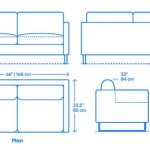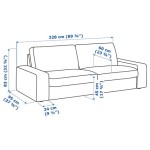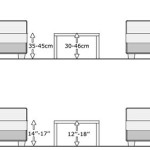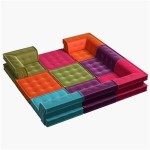Sofa Fabric Repair
Sofas are integral parts of most homes, providing comfort and contributing significantly to a living space's aesthetic. Over time, regular use inevitably leads to wear and tear, often manifesting as damage to the sofa's fabric. Understanding various fabric repair techniques allows owners to address these issues, prolonging the sofa's lifespan and preserving its appearance.
Fabric damage can range from minor snags and pilling to more significant issues like rips, tears, and burns. The appropriate repair method depends on the fabric type, the extent of the damage, and the desired outcome. A thorough assessment of the damage is crucial before attempting any repair.
For minor snags or pulls, a simple fix often involves carefully pulling the snagged thread back into the fabric using a needle or a crochet hook. This technique works best on tightly woven fabrics. Loose threads can be trimmed close to the fabric surface, taking care not to cut into the surrounding material.
Pilling, the formation of small fuzzy balls on the fabric surface, is common on materials like wool and microfiber. A fabric shaver or a specialized de-pilling tool can effectively remove these pills, restoring the fabric's smoothness. Regular brushing can also help prevent pilling.
Larger holes or tears require patching. This involves attaching a piece of matching fabric to the underside of the damaged area. Iron-on patches offer a convenient solution for small tears, while larger repairs might necessitate hand-sewing or machine stitching the patch in place. Choosing a fabric that closely matches the sofa's original material is essential for achieving a seamless repair.
When selecting a patch, consider the fabric's weight, texture, and color. If an exact match isn't available, a complementary fabric can be used, perhaps sourced from an inconspicuous area of the sofa, such as the underside of a cushion. For patterned fabrics, aligning the patch with the existing pattern is crucial for a discreet repair.
Burns on sofa fabric are often more challenging to repair. Small, superficial burns can sometimes be disguised by gently brushing the charred fibers away with a soft brush. However, deeper burns may require more extensive repair, such as patching or professional upholstery work.
Leather sofas require different repair techniques. Small scratches can often be treated with leather conditioner or a specialized leather repair kit. Larger tears or punctures may require professional attention due to the complexity of working with leather.
Professional upholstery services offer a reliable solution for complex fabric repairs. Experienced upholsterers possess the skills and tools to handle a wide range of fabric issues, from patching and stitching to complete reupholstery. They can also advise on the best course of action for specific damage types.
Preventive measures can significantly extend the life of sofa fabric. Regular vacuuming helps remove dust and debris that can contribute to wear and tear. Using throws and slipcovers provides an extra layer of protection, especially in high-traffic areas. Protecting the sofa from direct sunlight can prevent fading and discoloration.
Addressing spills promptly is crucial. Blot the spill immediately with a clean cloth, avoiding rubbing, which can spread the stain. Refer to the sofa's care instructions for specific cleaning recommendations based on the fabric type. Avoiding harsh chemicals and abrasive cleaners is essential to prevent further damage.
Pet owners face unique challenges in maintaining their sofa's fabric. Regularly trimming pets' nails can minimize the risk of scratches. Using pet-friendly furniture covers can protect the sofa from pet hair and dander. Training pets to stay off the furniture can be a long-term solution, although not always feasible.
Choosing durable and stain-resistant fabrics can also contribute to the longevity of a sofa. Performance fabrics, specifically designed to withstand wear and tear, offer excellent resistance to stains, fading, and pilling. These fabrics are often treated with protective coatings that repel liquids and prevent dirt from embedding in the fibers.
Ultimately, the decision to repair or replace a sofa depends on various factors, including the extent of the damage, the sofa's age and overall condition, and the cost of repair versus replacement. Careful consideration of these factors will help determine the most appropriate course of action.
Understanding the different types of fabric damage and the available repair options empowers sofa owners to address these issues effectively, preserving the sofa's comfort and appearance for years to come.

Sofa Fabric Change Upholstery Cleaning And Polishing The Makers

Quick 20 Fabric Upholstery Repair Kit As Seen On Tv

How To Fix Pulls Or Snags In Your Furniture Upholstery Fabric Dimples And Tangles

How Can I Repair A Ripped Couch Hometalk

How To Repair Torn Upholstery New England

Lilvigor Self Adhesive Leather Pu Fabric Repairing Patches For Sofa Car Seats Clothing 7 8 61 Inch Black Com

How To Repair A Torn Sofa At Home Step By Diy Tutorial

Sofa Fabric Repair Patch 6 Piece Microfiber Patches Self Adhesive Luxurious Look Quick Fix Light Grey Com

Suede Fabric Material Microsuede Upholstery Repair Replace Multi Function 60 W Com








